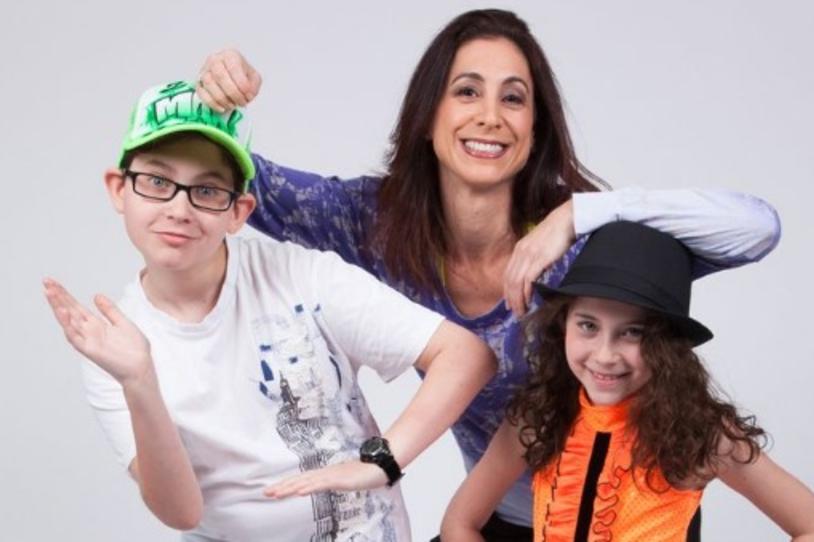
Beth Hochstein poses with her two children, Max and Sarah
Editor's Note: With her Dance Party for Parkinson’s Zumbathon Charity Event coming up on Saturday, April 5 in New York City, we asked Team Fox mentor Beth Hochstein to tell us a little more about the importance of fitness and dance in the life of a Parkinson’s patient.
I started dancing when I was 2 years old. I vaguely remember being on stage in a bunny costume and ballet slippers. I loved to dance from that moment on. By the time I was 9, I was taking ballet, tap and jazz classes. I continued to dance through college- it was a great stress reliever. And took a jazz class up until I was 6 months pregnant with my son and could no longer leap into the air.
It took a diagnosis of young-onset Parkinson's disease just before my 37th birthday to bring me back to what I loved. When my doctor advised me to start exercising, I returned to dance- first with hip hop (inspired by my son) and then I discovered the world of Zumba® fitness. Zumba was perfect for me because I became so distracted with the fun I was having, that I forgot I was exercising!
Later, I discovered The Mark Morris Dance Group Dance For PD® program—a class started by a group of wonderfully talented dancers just for individuals with PD—and was intrigued. At the time, I was still in private practice as a podiatrist, keeping my disease a secret, but I knew that one day I would have to stop working. Little did I know that a few years later, dance would become a new career for me.
When I ended my 10-year career as a podiatrist in 2010, it was not easy to say the least and there are still days I really miss it. But having combined my medical background with my love for dance, I’ve found a new career that has proved that following your passions is the best medicine! In addition to becoming a licensed Zumba instructor, I also started co-teaching a Dance for Parkinson's class with a friend and realized how great dance is for people living with PD. What I observed was that my students would often have trouble doing the steps without music, but once the music started, their movement became more fluid and they could move better.
I continue to teach dance today and work to encourage those who have PD to start moving or those who exercise already, to keep moving. I have also encouraged my students to take a few minutes out of their day when they are not in my class to listen to and “feel” the music by doing what they can do with their bodies: dance.
In the meantime, dance has continued to play such a big part in my life once again. In addition to teaching, I have also integrated dance into my fundraising efforts over the last three years through an annual Dance Party for Parkinson's event. Dance has proven to be a great medicine for my life with PD and being able to stand in front of a class and teach, despite my illness, is a gift that I hope to have for years to come.
By Dr. Beth Hochstein-Team Fox Member and Mentor, Licensed Zumba® instructor